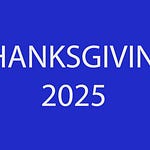Click the player above to listen to the podcast or read the transcript below.
During the 2020 presidential campaign, Joe Biden promised to get high-speed internet to everyone.
Who could be opposed to that?
Oh, sure, the internet companies were already working toward that goal.
In 2020, when Biden made the promise, an estimated 79% of U.S. households had high-speed internet connection, and one internet group projected that by 2025, 95% of U.S. households would have high-speed internet connection.
I know that’s a lot of people, but it’s not everybody.
The government had no choice. It had to step in and solve the “problem.”
So, in 2021, as part of the $1.2 trillion Infrastructure Investment and Jobs Act passed by Congress, $42.45 billion was designated to “connect everyone in America to reliable, affordable high-speed internet by the end of the decade.”
There! Problem solved.
The government said it would take care of it. And it would only cost $42.45 billion!
Progress?
Well, a couple of years have gone by since the $42.45 billion was authorized and so far … no one has been connected to the internet through this program.
No one. Zero. Nada.
But don’t worry. The government has it under control.
Alan Davidson, who heads the federal project, said they’ve been in the planning phase and should begin building in 2024.
Wait a minute. 2024 is this year.
So, he revised the date the government would begin building in a report to Congress. They won’t actually begin building out the project until 2025 or maybe 2026.
But they would take care of it.
At least they said they would.
Apparently, there are some problems
Some less-than-friendly critics of government involvement in the program have suggested there might be some problems with the government’s approach.1
They believe the government has too many requirements that get in the way of completing the project. There are too many climate change mandates that hinder the building of massive infrastructure to support high-speed internet for rural areas.
There are too many requirements for hiring union workers and using companies committed to DEI hiring practices. That means even people with criminal records are supposed to be involved in installing the broadband equipment.
And the government wants to regulate consumer rates, even though that would punish internet providers and ignores the law that prohibits the government from implementing such rate controls.
But they have $42.45 billion and need to spend it.
Elon Musk … yes, that Elon Musk … said if the government really wants to spend $42 billion dollars to bring high speed internet to rural people, the government could buy 140 million Starlink satellite dishes. Not only would that provide high-speed internet in every rural area, it would also reach almost half the population of the United States.
“This government program is an outrageous waste of taxpayer money and is utterly failing to serve people in need,” Musk said.2
But it’s Elon Musk. What does he know about technical stuff like that?
The government will take care of it. They said they would.
We may have to wait until the end of the decade before this “emergency” is fixed by the government, but we’re sure they will do a great job. The government always does a great job.
After all, it’s your money and they are always very careful how they spend your money.
Words from the “Gipper”
The nine most terrifying words in the English language are “I’m from the government, and I’m here to help.”
President Ronald Reagan, August 12, 1986
Biden's $42.5 billion rural high-speed internet plan gets stuck in red tape - Washington Times
Elon Musk torches 'outrageous waste of taxpayer money' after Biden's $42 billion program fails to provide internet in 3 years | Blaze Media (theblaze.com)











